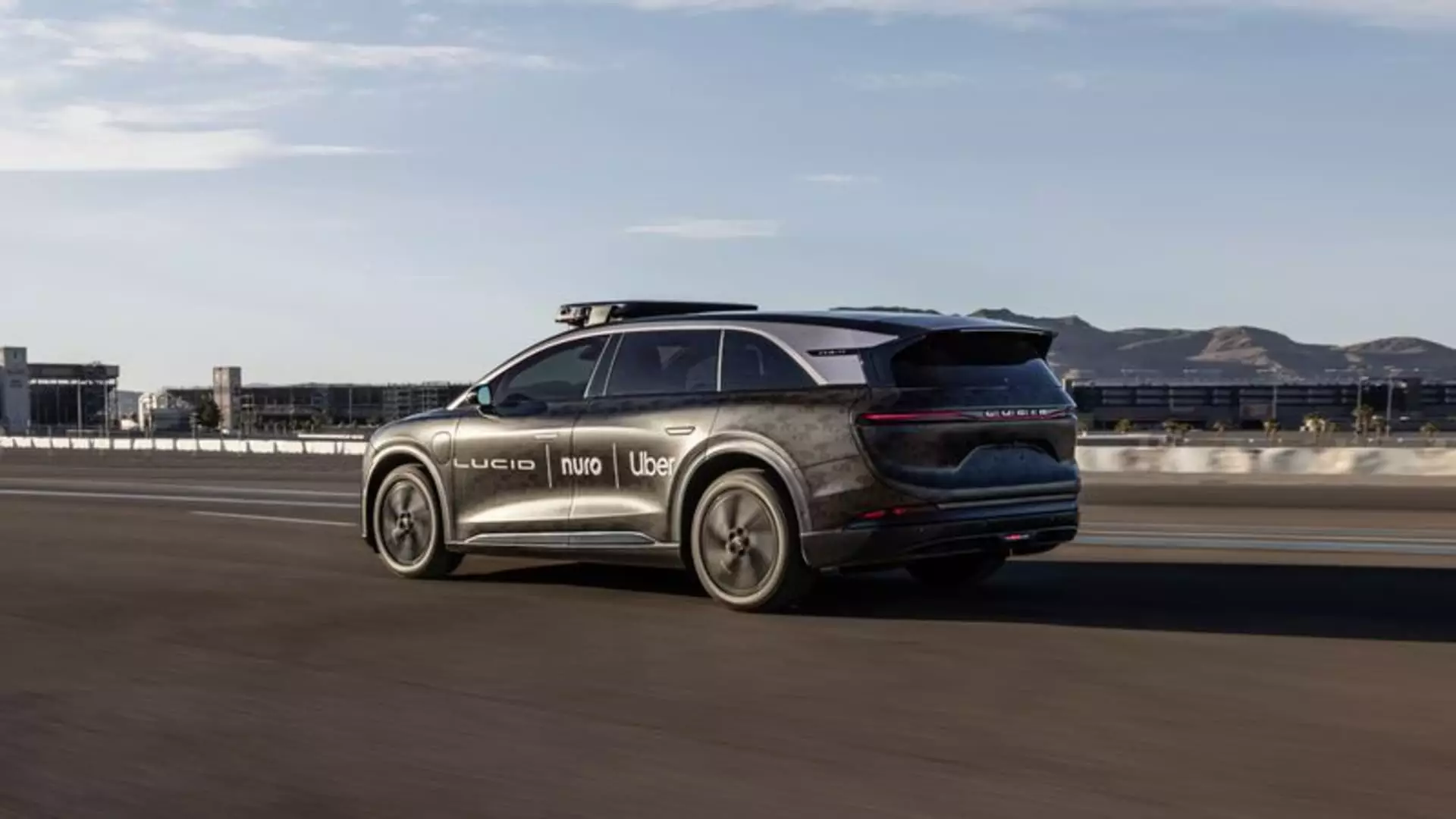The recent announcement of Uber’s ambitious plan to deploy more than 20,000 robotaxis over the next six years signals a pivotal moment in urban transportation. From a center-right liberal perspective, this initiative embodies both the innovative spirit necessary for economic progress and the cautious optimism required to balance technological advancement with societal stability. The partnership with industry leaders like Lucid and Nuro reveals a strategic move to cement Uber’s position in what promises to be the next major mobility market shift — autonomous, electric, shared transportation.
Investments exceeding $300 million highlight the confidence that private enterprise places in autonomous vehicle technology as a catalyst for economic growth. It’s easy to see this as a testament to the resilience and adaptability of market-driven solutions—striving to replace outdated models that are costly, inefficient, and often plagued by labor disputes or regulatory hurdles. Yet, this push for automation also raises questions about the disruption of employment, the equity of service distribution, and whether technological superiority alone guarantees societal benefits.
While proponents tout the environmental and efficiency benefits—cutting costs, reducing emissions, and improving urban congestion—the central concern remains: does this move serve the wider public good or primarily benefit corporate interests? As an advocate of free enterprise, I argue that innovation should not be stifled but instead should be guided by pragmatic policies ensuring balanced growth. The deployment of thousands of autonomous vehicles must be scrutinized to prevent a scenario where technological leaps widen socioeconomic divides or undermine traditional jobs systematically.
Technological Progress Versus Practical Challenges
Nuro’s Level 4 self-driving systems, backed by strong corporate and venture capital support, promise a significant leap toward fully autonomous urban transit. These vehicles are designed to operate without human oversight under typical traffic conditions, signifying an evolution from supervised systems like Tesla’s Autopilot to machines that promise true independence. However, this transition is fraught with technical, regulatory, and safety hurdles that cannot be overlooked.
The partnership’s focus on urban hubs within the U.S.—initially launching in a major city—demonstrates a cautious yet optimistic approach. Nevertheless, deploying such complex technology on a wide scale requires overcoming not just technological limitations but also public trust. Human drivers are unpredictable, and current autonomous systems, while impressive, still face challenges in harsh weather, intricate cityscapes, and unpredictable pedestrian behaviors. The question then becomes: can market ambitions outpace the current scientific and engineering realities?
Lucid’s emphasis on their electric vehicle technology’s leadership positions the company as a serious contender in the mobility race, but the true test will be how seamlessly these vehicles integrate into existing urban infrastructures. The promise of a 450-mile range for Lucid’s Gravity vehicle, for example, aims to address costs and logistics, yet economic viability ultimately depends on consistent safety, affordability, and public acceptance. As a center-right analyst, I believe that the market, driven by competition and innovation, will find mechanisms to adapt, but policymakers must create regulations that foster this evolution without exposing citizens to undue tech-related risks.
Strategic Implications for Society and Market Dynamics
The collaboration between Uber, Lucid, and Nuro hints at a broader shift towards a highly centralized and corporatized form of urban mobility. While this could mean more efficient, shared transportation options lowering personal car ownership, it raises concerns about monopolization and control over essential infrastructure.
From a liberal-center viewpoint, fostering competition and protecting consumer interests should remain a priority. The involvement of giants like Google-backed Nuro and innovative EV leaders like Lucid showcases a desire to create a competitive environment, but it’s crucial that regulatory frameworks prevent market dominance from stifling smaller challengers or innovation diversity.
Furthermore, the potential for these autonomous fleets to lower operational costs could revolutionize urban transit, making it more accessible and less polluting. Still, the societal implications cannot be ignored: what happens to traditional taxi drivers, parking industries, and urban planning? Policymakers must carefully navigate this transition, ensuring that technological progress benefits all—particularly those most vulnerable to displacement.
The quest for a smarter, autonomous urban mobility future promises both tremendous opportunities and significant challenges. The strategic alignment of industry leaders and tech giants signals that this could be a defining moment in our transportation history—if crafted thoughtfully, with an eye toward societal balance and sustainable growth.

